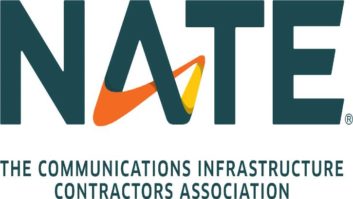Bob Meister in Hamden, Conn., says Xcelite has evidently tweaked the design of its popular screwdriver, model R3322 (round, 3/32-inch diameter, 2 inches long), commonly called “the greenie” because of its color.
For as far back as Bob can remember, and at least until a few years ago, the diameter of the entire screwdriver shaft was 3/32-inch. This made the screwdriver popular for adjusting potentiometers behind small panel holes. The design prevented mis-adjustments by would-be engineers (because a standard miniature screwdriver wouldn’t fit).

Fig. 1: Hey Xcelite, you new ‘greenie’ (bottom) may not fit.
But Bob’s most recent batch of “greenies” shows a redesign. Most of the shaft is now 1/8-inch diameter, while just the final 3/4 inch to the tip has been reduced to the original (and model-specific) 3/32-inch diameter.
This could be a problem in some situations, where the hole in a panel through which you insert the screwdriver might not be big enough.
Fig. 1 shows the new and old models. Note the taper in the lower driver.
Xcelite is part of Apex Tool Group. Radio World sent an email to the company to inquire about this change and we’ll share any reply.
* * *
If you haven’t covered the opening to your satellite LNB, be prepared for nesting insects, probably the stinging variety, to move in this fall.
At a recent Ennes Workshop I showed a picture of a plastic liter water bottle, cut down to fit inside the “throat.”

Fig. 2: Seal outdoor conduits as part of your winter prep.
Another engineer mentioned that he has used nylon fabric, stretched over the opening and secured by hose clamps. Still others said plastic mayonnaise or peanut butter lids fit fine too. Too small an opening? Try an aerosol spray can lid.
Metal, of course, can’t be used. But plastic seems to have very little effect on the satellite signal while keeping the insects out.
While you’re keeping bugs at bay, inspect your outdoor equipment carefully. This includes any conduits with openings, as seen in Fig. 2.
Conduits that go underground can provide shelter for rodents, which like to chew on cables. Buy some stainless steel or copper wool at a dollar store; mix in a little foam sealant and you have a great plug that can be removed to use the port opening for another cable.
* * *
Dave Burns, a real broadcast history buff, provides a link to a neat slide show about the history of the cart machine. Younger engineers, see what you missed.
The slides were prepared by Andy Rector of ACC Electronix for a presentation to the Broadcasters Clinic in Madison, Wis., in 2009. While some stations may still use carts, they are certainly in the minority; so for a trip down memory lane, follow the link to open the PDF: tinyurl.com/rwcart.
The Broadcasters Clinic, held annually in Madison, Wis., is organized by the Wisconsin Broadcasters Association and SBE Chapter 24; this year’s dates are Oct. 11–13. The clinic offers sessions for both radio and television engineers. (To see more clinic archival info, head to www.sbe24.org and click on “Broadcast Clinic.”)
Dave Burns is familiar to many readers from his days as an executive at equipment dealer Allied Broadcast.
* * *
EAS is on everyone’s mind these days. From the Broadcast Radio Technical Forum ([email protected]) comes a tip for owners of the new Sage encoder/decoders.
Gary Peterson of New Rushmore Radio in Rapid City was experiencing some difficulty in configuring his new Sage ENDEC. Michael Glaser, engineering manager for Barnstable Broadcasting’s Long Island Radio Group, provided Gary with a helpful name: Christopher Voumazos of Sage Alerting Systems.
Chris has a “cheat sheet” that will help with the configuration and answer questions. The sheet is available on Sage’s web FAQ page, in the section called “task sheets,” at www.sagealertingsystems.com/faq.htm.
Chris is part of the Sage support team, and can be reached at (914) 872-4069; dial “1” for support.
Thanks Michael for sharing your knowledge on the web at B-Net and here in Workbench.
Contribute to Workbench! You’ll help your fellow engineers, and qualify for SBE recertification credit. Send Workbench tips to [email protected] to (603) 472-4944.
Author John Bisset has spent 43 years in the broadcasting industry and is still learning. He is SBE Certified and is a past recipient of the SBE’s Educator of the Year Award.












